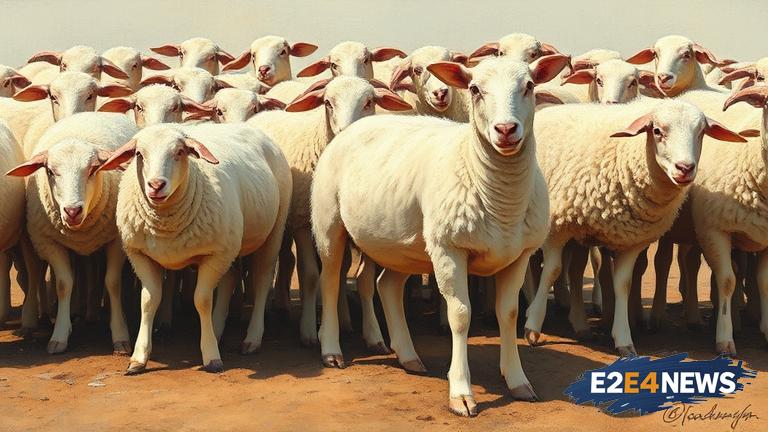The global lamb market has witnessed a significant surge in prices, with heavy lamb prices reaching unprecedented levels. This trend is largely attributed to the limited supply of lambs, which has led to a shortage in the market. The high demand for lamb, particularly from major consumers such as China and the Middle East, has further exacerbated the situation. As a result, farmers and producers are benefiting from the increased prices, with many reporting record-high returns. However, the surge in prices has also raised concerns among consumers, who may face higher costs for lamb products. The limited supply of lambs is due to various factors, including droughts, floods, and disease outbreaks, which have affected breeding and production. Additionally, the COVID-19 pandemic has disrupted global supply chains, leading to a shortage of lambs in the market. The high demand for lamb is driven by its increasing popularity as a protein source, particularly in Asia and the Middle East. The growing middle class in these regions has led to an increase in demand for high-quality protein sources, including lamb. Furthermore, the nutritional benefits of lamb, such as its high iron and protein content, have made it a popular choice among health-conscious consumers. The surge in lamb prices has also led to an increase in prices for other livestock products, such as beef and pork. However, the long-term sustainability of the lamb market remains a concern, with many experts warning of a potential market correction. The Australian lamb market, in particular, has been affected by the surge in prices, with many farmers reporting record-high returns. The country’s lamb industry is expected to continue to grow, driven by increasing demand from Asia and the Middle East. Despite the challenges facing the industry, including droughts and disease outbreaks, the long-term outlook for the Australian lamb market remains positive. The surge in lamb prices has also highlighted the need for sustainable and efficient production practices, to ensure the long-term viability of the industry. Overall, the global lamb market is expected to continue to experience high prices, driven by limited supply and high demand, with the Australian lamb industry playing a significant role in meeting this demand.
